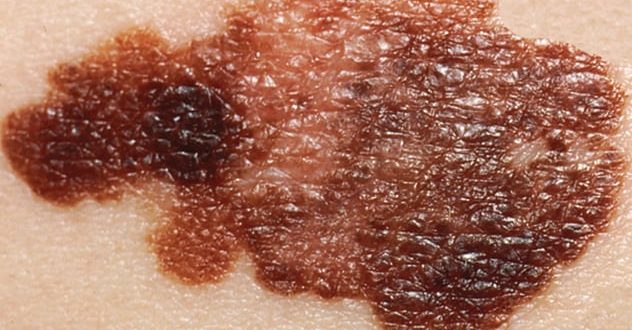Scientists have developed a novel way to stop the growth of melanoma – a major breakthrough that offers hope of one day effectively treating the cancer.
Melanoma is the fifth most common cancer in the UK, with around 16,000 new cases diagnosed each year.
Study leader Professor Ze’ev Ronai, director of the Cancer Centre at Sanford Burnham Prebys, explained that melanoma – the most severe form of skin cancer – cannot survive and grow without an enzyme called GCDH, which plays a key role in metabolising amino acids.
Inhibiting GCDH leads to a structural change in another protein, called NRF2, which then acquires the ability to suppress cancerous cells, Prof Ronai said.
Because tumours grow rapidly and require lots of nutrition, researchers have been investigating ways to starve cancer cells. It has been promising approach, but the results have been less than stellar. Denied one food source, cancers find others.
GCDH, which stands for Glutaryl-CoA Dehydrogenase, plays a significant role in metabolising lysine and tryptophan, two amino acids essential for human health, which are both “eaten” by melanoma cells to produce energy.
As part of their investigations, Prof Ronai and his team found that GCDH was mission-critical for the cancerous cells to generate energy and grow.
“Melanoma cells ‘eat’ lysine and tryptophan to produce energy,” said Dr Sachin Verma, one of the study authors.
“It’s a six-step process, and we thought the cells would need all six enzymes. But it turns out that only one of these enzymes is crucial – GCDH. Melanoma cells cannot survive without the GCDH portion of the pathway.”
Further experiments showed that inhibiting GCDH in an animal model gave NRF2 cancer-suppressing properties.
Prof Ronai said: “We’ve known for a long time that NRF2 can be both a driver and a suppressor of cancer.
“We just didn’t know how we could convert NRF2 from a driver to a suppressor function. Our current study identifies the answer.”
The researchers also found that the benefits of inhibiting GCDH were specific to melanoma tumours.
Similar efforts in lung, breast and other cancers had no impact, probably because those cancers might be reliant on other enzymes for survival and growth.
Given the role of GCDH in processing proteins, the authors believe tumours deprived of this enzyme might also be vulnerable to high-protein foods, setting up a potential dietary treatment.
Prof Ronai’s team is now working with scientists at the Conrad Prebys Centre for Chemical Genomics at Sanford Burnham Prebys to identify small-molecule GCDH inhibitors that could be the starting point for future melanoma treatments.
“In the study, we used genetic approaches to inhibit GCDH, which provide the proof of concept to search for small-molecule inhibitors,” Dr Verma said.
“Indeed, we are actively searching for potential drugs that could inhibit GCDH, which would be candidates for novel melanoma therapies.”
The Independent
 Lebanese Ministry of Information
Lebanese Ministry of Information



